Variegated Chikoo Sapodilla Grafted Plant
Variegated Chikoo Sapodilla Grafted Plant refers to a unique variety of the Sapodilla tree (Manilkara zapota) that features leaves with variegated patterns typically green leaves with creamy white or yellowish streaks. The plant is primarily known for its ornamental appeal due to this variegation, in addition to producing the well-known chikoo (or sapodilla) fruit.
Key Characteristics:
- Appearance:
- The Variegated Chikoo tree is similar in form to the regular sapodilla tree, typically growing into a medium to large evergreen tree with a dense, rounded canopy.
- The leaves are what set it apart, they are glossy with variegated patterns, usually green with creamy or yellowish-white streaks that create a striking visual contrast.
- Flowers are small, white, and inconspicuous, usually blooming year-round.
- The fruit is brown and round to oval, with a rough, sandy outer skin and sweet, brown flesh inside. The fruit has a rich, malty flavor and is often eaten fresh or used in desserts.
- Growth:
- Size: Typically, the Variegated Chikoo Sapodilla Grafted Plant can grow up to 30-60 feet tall (9-18 meters) in the right conditions, but it can be pruned to maintain a smaller size, especially in a garden setting.
- Growth Rate: Sapodilla trees have a slow to moderate growth rate, taking several years to reach full maturity and bear fruit.
Growing Conditions:
- Climate: Chikoo is a tropical to subtropical tree that thrives in warm, frost-free climates. It prefers temperatures between 77-86°F (25-30°C) but can tolerate temperatures as low as 28°F (-2°C) for short periods.
- Light: Variegated Chikoo prefers full sun for optimal growth and fruit production. It should receive at least 6-8 hours of direct sunlight daily.
- Soil: The tree is adaptable to a variety of soil types but prefers well-drained, loamy soil with a pH between 6.0 and 7.5. It can tolerate sandy or slightly acidic soils, provided they are well-drained.
- Watering: Regular watering is important, especially during the establishment phase. Once mature, the chikoo tree is fairly drought-tolerant, but consistent watering during dry periods will improve fruit yield. Overwatering or poor drainage can lead to root rot.
- Fertilization: Fertilize the variegated chikoo tree with a balanced, slow-release fertilizer during the growing season (spring and summer). The fertilizer should be rich in potassium and magnesium, which support fruit development. Organic compost can also be beneficial.
Care and Maintenance:
- Pruning: Regular pruning is necessary to maintain the shape of the variegated chikoo tree and to remove any dead or diseased branches. Pruning also helps improve air circulation and sunlight penetration within the canopy.
- Pest and Disease Management: The chikoo tree can be affected by pests such as aphids, scale insects, and spider mites. It may also suffer from fungal diseases like leaf spot or powdery mildew. Regular inspection and the application of organic or chemical treatments as needed can help manage these issues.
- Propagation: The variegated chikoo is typically propagated through grafting to ensure that the variegated trait is preserved. Propagation from seed may not result in variegated offspring, and the seed-grown trees take longer to bear fruit.
Uses:
- Ornamental: The variegated leaves make this tree particularly attractive as an ornamental plant in gardens, parks, or large containers. Its unique foliage adds visual interest and can be a focal point in landscape design.
- Fruit Production: The tree produces chikoo fruit, which is highly valued for its sweet, malty flavor. The fruit can be eaten fresh or used in smoothies, jams, and desserts.
- Shade and Shelter: Like other sapodilla trees, the variegated chikoo can provide shade and serve as a windbreak in larger garden settings.
The Variegated Chikoo is a beautiful and functional tree that combines the appeal of ornamental foliage with the practical benefit of fruit production. Its unique variegation makes it a standout choice for gardeners looking to add both beauty and utility to their landscapes.


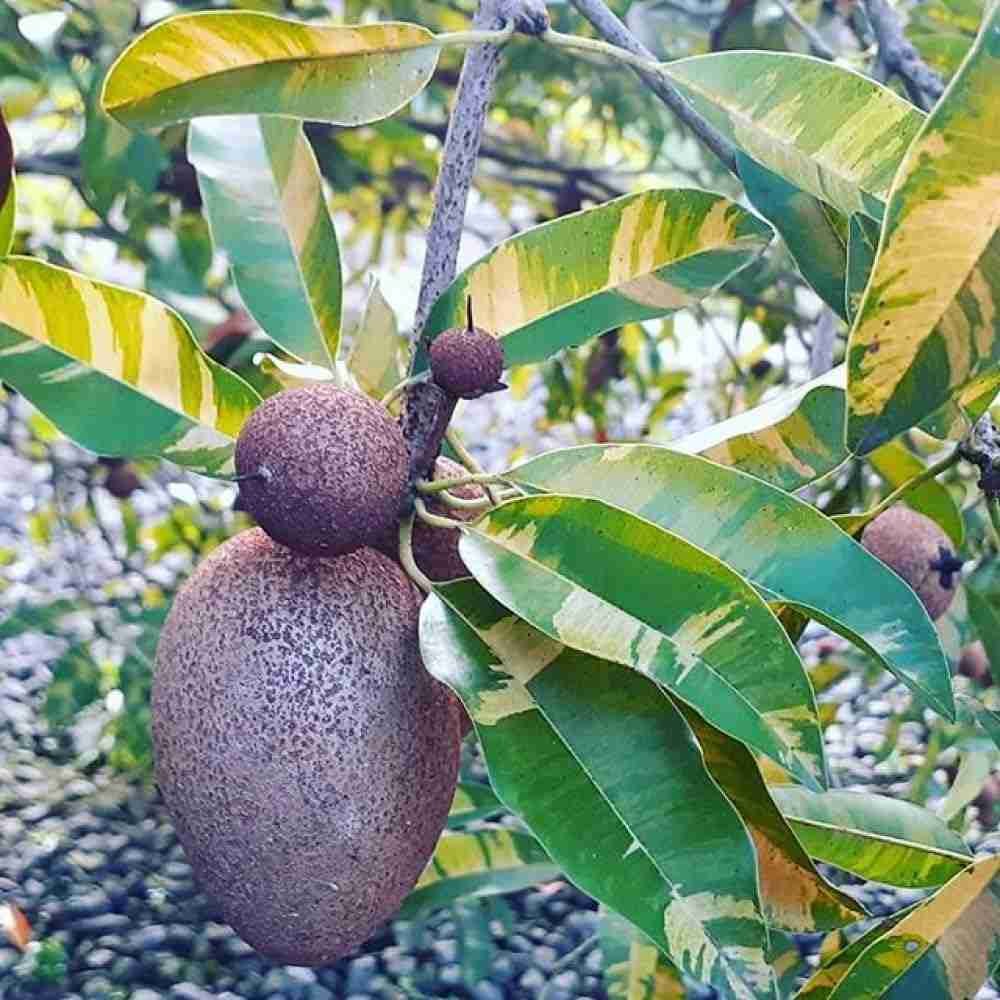
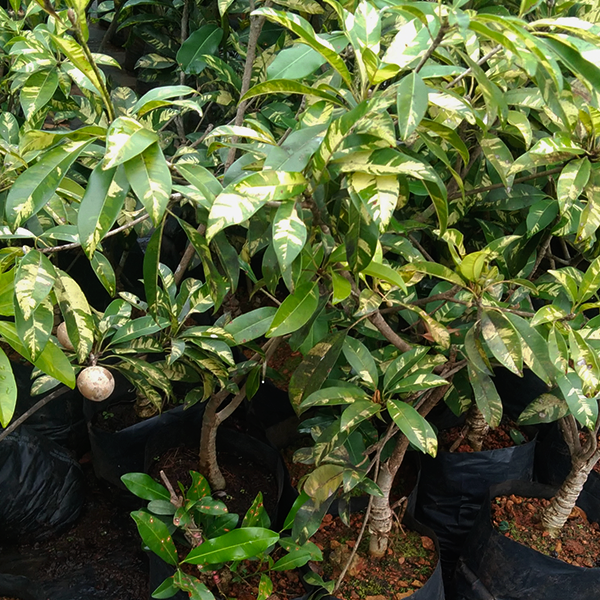
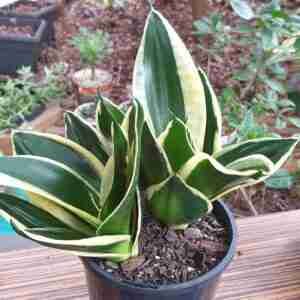
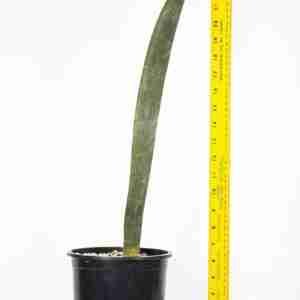
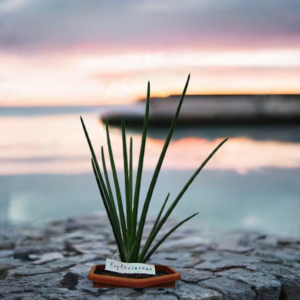
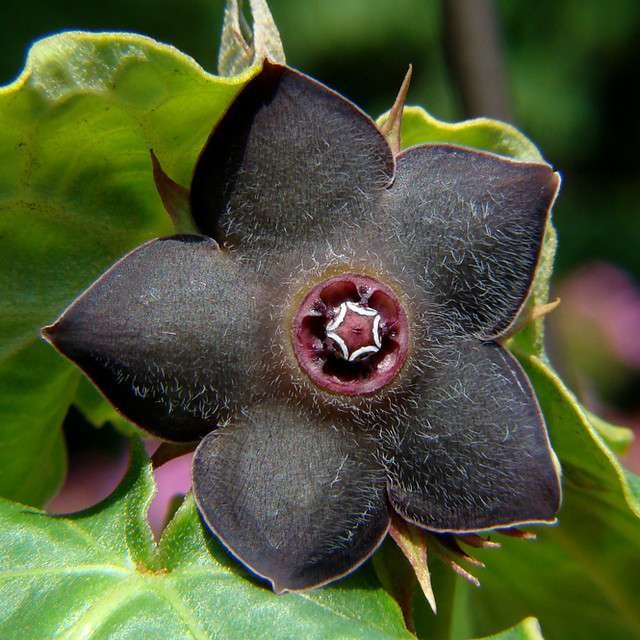
Pritam –
Small but healthy plant received…… Proper packing care